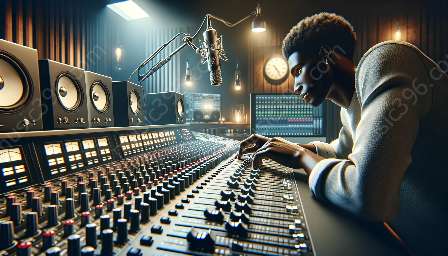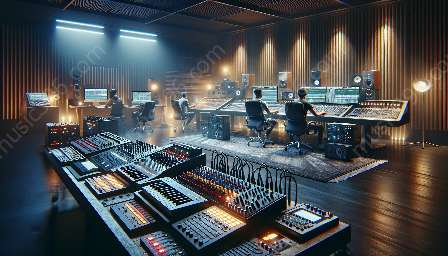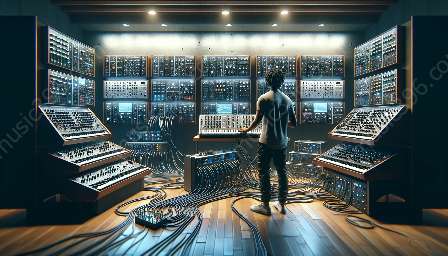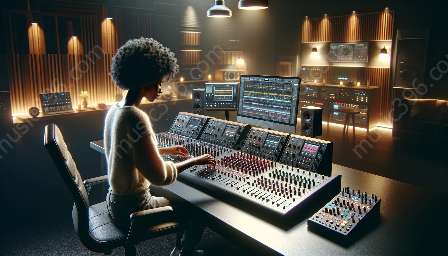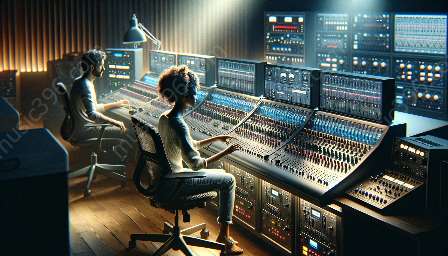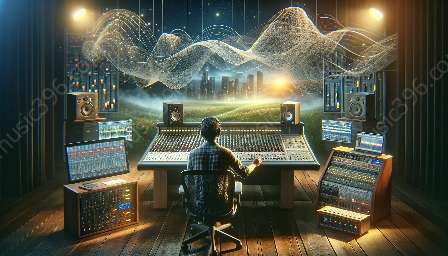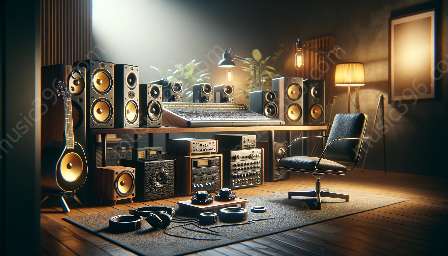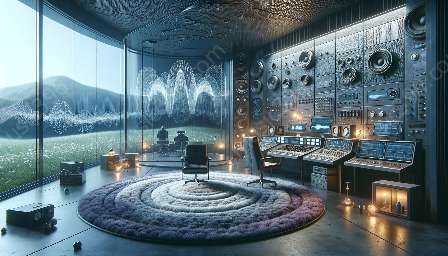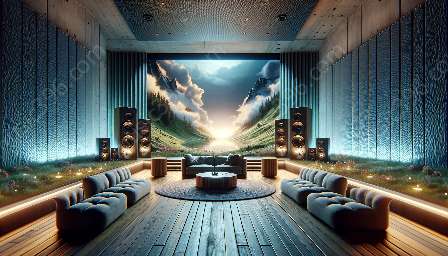Music is a complex interplay of sounds and frequencies, and understanding auditory masking is crucial for audio production. Auditory masking refers to the phenomenon where the perception of one sound is affected by the presence of another sound. In the context of music and audio production, this concept plays a pivotal role in shaping the overall listening experience.
Psychoacoustic Aspects of Auditory Masking
Psychoacoustics, the study of how the human brain perceives sound, provides the foundational framework for understanding auditory masking. Numerous psychoacoustic principles come into play when examining auditory masking in music and audio production, including frequency masking, temporal masking, and simultaneous masking.
Frequency Masking
Frequency masking occurs when a loud sound restricts the ability to hear quieter sounds at similar frequencies. In music technology, understanding frequency masking is critical for managing the spectral balance of different instruments and elements within a mix. By identifying potential masking issues, producers and engineers can make informed decisions to enhance the clarity and separation of individual elements.
Temporal Masking
Temporal masking, also known as time masking, occurs when the perception of a sound is influenced by the presence of preceding or succeeding sounds. This phenomenon has implications for audio processing techniques such as compression and reverb, where the temporal characteristics of sounds can affect their overall perceptibility.
Simultaneous Masking
Simultaneous masking refers to the phenomenon where the perception of a sound is influenced by the presence of other sounds occurring at the same time. This concept is particularly relevant in the design of audio compression algorithms, where the encoding and decoding processes must consider the psychoacoustic aspects of simultaneous masking to ensure optimal audio quality.
Interplay with Music Technology
Understanding the psychoacoustic aspects of auditory masking is integral to leveraging modern music technology for audio production. With advancements in digital signal processing and machine learning, music technology has enabled sophisticated tools and techniques to address auditory masking challenges.
Dynamic Range Compression
Dynamic range compression, a key tool in audio production, involves controlling the dynamic range of audio signals. By incorporating psychoacoustic principles related to auditory masking, dynamic range compression algorithms can intelligently adjust the levels of different frequencies to mitigate masking effects and enhance the overall clarity of the audio mix.
Equalization
Equalization (EQ) is a fundamental tool for shaping the frequency balance of audio signals. Psychoacoustic considerations related to frequency masking inform the strategic application of EQ to manage the spectral interactions between different sound sources, ultimately optimizing the perceptual clarity of the mix.
Spatial Audio Processing
Spatial audio processing techniques, such as stereo imaging and binaural processing, aim to create a sense of space and depth in the audio. Understanding auditory masking from a psychoacoustic perspective empowers engineers to implement spatial processing in a manner that minimizes masking artifacts and maximizes the immersive quality of the audio.
Application in Audio Production
Applying the principles of auditory masking and psychoacoustics in audio production involves a blend of technical expertise and artistic intuition. Producers and engineers must navigate the intricate relationship between auditory masking and music technology to achieve optimal sonic results.
Mixing and Mastering
In the context of mixing and mastering, addressing auditory masking is crucial for refining the sonic balance and ensuring that individual elements maintain their clarity and impact within the overall mix. Leveraging psychoacoustic knowledge equips professionals to fine-tune the spatial, frequency, and temporal aspects of the mix, leading to a cohesive and compelling listening experience.
Sound Design
Sound designers leverage psychoacoustic insights related to auditory masking to craft sounds that stand out in various sonic environments. By understanding how different sounds interact and influence each other perceptually, sound designers can create compelling audio experiences that captivate listeners while minimizing unwanted masking effects.
Conclusion
Auditory masking, when approached from a psychoacoustic standpoint and in conjunction with music technology, offers valuable insights for enhancing the production and perception of music and audio. By delving into the psychoacoustic aspects of auditory masking, professionals in the realms of music production and audio engineering can refine their creative processes and deliver captivating sonic experiences to audiences, ultimately bridging the gap between technological innovation and artistic expression.

